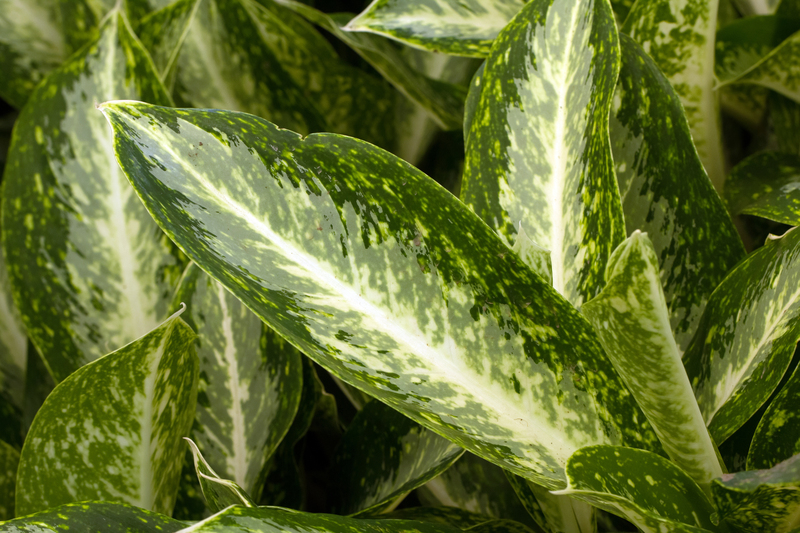The Ultimate Starter's Guide to Perfect Lawn Care
Are you dreaming of a lush, green yard that's the envy of your neighbors? Whether you're a complete beginner or just looking to refine your skills, this comprehensive starter's guide to perfect lawn maintenance will walk you through everything you need to know to achieve a vibrant, healthy lawn. With the right knowledge and techniques, anyone can grow the perfect patch of grass. Let's get started!
Why Lawn Care Matters
A beautifully maintained lawn is more than just a patch of grass--it's an extension of your home, a space for relaxation, and a statement of pride. Proper lawn care improves curb appeal, increases property value, and provides a soft, inviting place for friends and family. But perfect lawns don't happen by accident; they're the result of intentional, year-round effort.

Understanding Your Lawn: Foundations for Lawn Care Success
Know Your Grass Type
The first step in mastering lawn care for beginners is identifying your grass type. Different species require varying care methods and schedules. The two main categories are:
- Cool-season grasses (e.g., Kentucky bluegrass, fescue, ryegrass): Thrive in fall and spring; suited for northern climates.
- Warm-season grasses (e.g., Bermuda, zoysia, St. Augustine): Grow best in hot summers; perfect for southern regions.
Test and Improve Your Soil
Healthy lawns begin with healthy soil. Discover your soil's pH and nutrient levels with a simple soil test (available at most garden centers). Ideal pH ranges from 6.0 to 7.0. If your soil is too acidic or alkaline, amend it with lime or sulfur as needed.
- Enrich poor soil with compost or organic matter to enhance drainage and fertility.
- Aerate compacted soil to allow roots, water, and nutrients to penetrate more deeply.
Essential Lawn Care Equipment and Tools
Before diving into your lawn maintenance routine, ensure you have the following tools:
- Lawn mower: Choose between reel, rotary, or electric depending on lawn size and preference.
- String trimmer or edger: For clean borders and hard-to-reach spots.
- Rake: Essential for clearing debris and helping with overseeding.
- Garden hose and sprinkler or irrigation system.
- Soil tester: For monitoring pH and nutrient content.
- Fertilizer spreader: Ensures even application of nutrients.
- Aerator tool (optional but recommended, especially for compacted soils).
The Step-by-Step Lawn Care Routine
Perfecting your lawn is a year-round process. Here is a detailed breakdown of routine lawn care tasks to keep grass thick, green, and healthy.
1. Mowing the Right Way
Proper mowing is the cornerstone of excellent lawn maintenance. Follow these guidelines for best results:
- Never cut more than 1/3 of the grass blade height at a time. This avoids stress and promotes deep roots.
- Keep blades sharp. Dull mower blades tear grass, causing brown tips and increasing disease susceptibility.
- Adjust height according to grass type and season. Taller grass provides better shade for roots and discourages weeds.
- Mow regularly--generally once per week during the active growing season.
2. Watering Techniques for a Lush Lawn
Applying water correctly can make or break your lawn's appearance and health.
- Water early in the morning to reduce evaporation and fungal growth.
- Soak deeply, but infrequently--about 1 inch of water per week, including rainfall.
- Avoid shallow, frequent watering; this encourages shallow roots and less drought-resilient grass.
- Adjust watering during drought or excessive heat; be flexible for your climate and soil conditions.
3. Fertilizing for Healthy Growth
Feeding your lawn is key to keeping it green and robust.
- Apply a balanced fertilizer based on your grass type and soil test results.
- Fertilize during peak growth times--spring and fall for cool-season grasses, late spring through summer for warm-season varieties.
- Avoid over-fertilizing, which can burn grass and harm the environment.
4. Aeration and Overseeding
Soil compaction and thinning grass are common problems.
- Aerate your lawn annually or as needed, especially in high-traffic areas. This means poking small holes to relieve compaction and allow water and nutrients to reach roots.
- Overseed your lawn each fall (cool-season) or spring (warm-season). Spread grass seed over your existing lawn to fill bare spots and improve density.
- Keep new seed moist until established--do not let it dry out.
5. Weed, Pest, and Disease Control
A beautiful lawn is often threatened by weeds, insects, and diseases. Stay ahead by:
- Hand-pulling weeds or spot-treating with a selective herbicide. Focus on problem areas before they spread.
- Practice integrated pest management: Monitor for signs of pests such as grubs or chinch bugs, and use eco-friendly solutions wherever possible.
- Mow, water, and fertilize properly to boost natural resistance to disease and weed invasions.
Monthly Lawn Care Calendar for Beginners
To achieve a perfect yard, follow this month-by-month schedule tailored for most grass types:
- Spring: Rake up debris, apply pre-emergent weed control, fertilize, aerate if needed, and overseed bare patches.
- Summer: Mow high, water deeply, spot-treat for weeds and pests, and avoid heavy fertilization in extreme heat.
- Fall: Aerate, fertilize (especially for cool-season lawns), overseed, remove leaves regularly, and lower mowing height for the final cut.
- Winter: Limit foot traffic over frozen grass, remove heavy debris, and sharpen tools for spring.
Common Lawn Care Mistakes and How to Avoid Them
Even the most diligent lawn lovers can make errors that sabotage their hard work. Keep an eye out for these beginner pitfalls:
- Overwatering or underwatering--Measure rainfall and irrigation; more isn't always better.
- Cutting grass too short ("scalping")--This weakens roots and invites weeds.
- Ignoring soil health--Test and amend your soil for optimal grass growth.
- Neglecting equipment maintenance--Dull mower blades can ruin even the healthiest grass.
- Using the wrong fertilizer--Match your product to your lawn's needs and season.
Advanced Tips for the Aspiring Lawn Perfectionist
Ready to take your lawn care plan to the next level? Consider these pro strategies:
- Topdressing with compost or fine soil to improve texture and nutrition without smothering grass.
- Creating mowing patterns for an attractive, professional appearance.
- Mulching clippings instead of bagging saves time and returns nutrients to the soil.
- Implementing integrated pest management to reduce chemical dependence and benefit wildlife.
- Edging and trimming for crisp, neat boundaries along gardens, sidewalks, and driveways.
Eco-Friendly and Sustainable Lawn Practices
More homeowners are choosing environmentally conscious approaches to lawn maintenance. These green strategies can deliver a beautiful lawn with less impact:
- Opt for organic fertilizers and weed controls where possible.
- Use native or drought-tolerant grass varieties to reduce water and chemical needs.
- Encourage beneficial insects by maintaining diverse plantings and avoiding broad-spectrum pesticides.
- Install rain barrels to collect water for irrigation.

Frequently Asked Questions About Lawn Care for Beginners
-
Q: How often should I mow my lawn?
A: Generally, mow once per week during peak growth. Adjust based on grass type and weather. -
Q: What is the best time to water my lawn?
A: Early morning (between 6-10 AM) is ideal to minimize evaporation and disease. -
Q: How do I get rid of brown patches?
A: Identify the cause--could be drought, pests, or disease. Address the underlying issue and overseed if necessary. -
Q: Is it necessary to aerate every year?
A: Not always, but do so annually if your soil is compacted or if you have heavy clay soil or high foot traffic. -
Q: Can I use my grass clippings as mulch?
A: Yes! Mulch mowing returns nutrients to the soil--just avoid doing this if grass is diseased.
Conclusion: Your Path to Lawn Care Excellence
Achieving the perfect lawn is possible for every homeowner with a consistent, informed approach to maintenance. By understanding your grass type, nurturing your soil, following a smart routine, and avoiding common mistakes, you'll enjoy a healthy, green lawn in every season. Don't be intimidated by the process--perfect lawn care starts with the first step. Follow this ultimate guide, and soon you'll be reaping the rewards of a beautiful yard you can take pride in.
Ready to begin? Armed with these essential strategies, you're on your way to creating your very own patch of paradise. For more expert tips and up-to-date advice, check back often and share your lawn care achievements!
